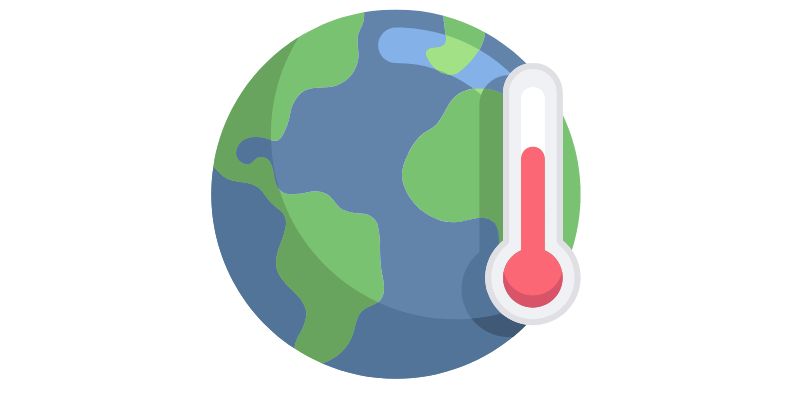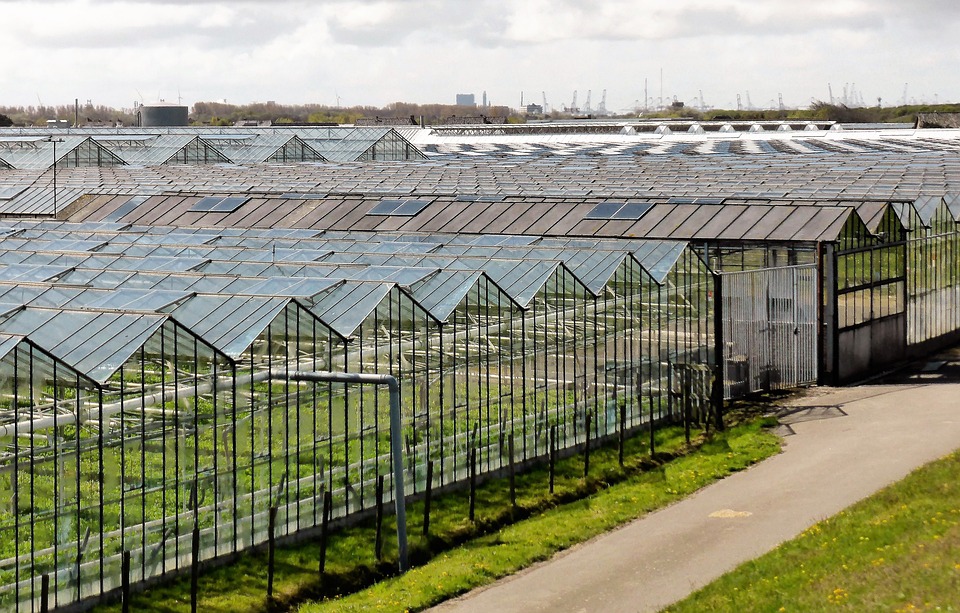Understanding Climate Change
Written by Prarthana Sheopuri. Managing Editor, I Kid You Not.
Written by Prarthana Sheopuri. Managing Editor, I Kid You Not.
First, a quick update on COP27 (as it’s realted to climate change)
What’s COP 27?

It was a climate summit that was recently held in Egypt – it concluded on the 20th of November 2022.
What are these summits?
These are UN climate summits that are held every year for governments to agree on steps needed to limit global increases in temperature.
COP stands for “Conference of the Parties” – these “parties” are the countries that signed up to the original UN climate agreement in 1992.
Why are these summits needed?
These are needed so that nations can get together and take steps to tackle climate change.
Global temperatures have been rising mainly because of the emissions produced by humans – they have risen 1.1C and are heading towards 1.5C – and if they rise any more parts of the world will become unlivable and almost half the world’s population could be exposed to life-threatening heat.
What was the main agenda of COP 27?
COP27 intended to focus on three main areas:
- Reducing emissions
- Helping countries to prepare for and deal with climate change
- Securing technical support and funding for developing countries for the above
So, what happened at the conference?
The summit was not generally seen as a super success for many reasons, but there was one historic thing that happened
The establishment of a Loss and Damage Fund
One of the main things that came out of this conference was a decision to establish, what’s called, a loss and damage fund.
What is that?
The fund – meaning a certain amount of money – will be allocated to providing financial help to those countries that face the worst impact of climate change
Why is that?
The idea is to make it fair.
Loss and damage means the destruction caused by climate change.
Like…
Like heatwaves, rising sea levels, floods, crop failures, desertification. Also, extreme events like floods and bushfires etc
As the climate crisis gets worse, such events will cause more destruction in parts of the world.
Here’s why it matters
There are times when parts of the world face the effect of climate change, while not being one of the main contributors to it.
For instance, the African continent actually does the least to contribute to climate change, and yet is the most prone to facing the impacts. As a result, African countries spend a lot more money on adapting to the climate crisis and its impacts than they do on healthcare.
So, the fund is meant to help these developing countires.
More about COP 27
More than 45,000 participants got an opportunity to share ideas, and solutions, and build partnerships.
People belonging to different sections of society, including indigenous (native) people showcased how they were addressing climate change and shared how it impacts their lives.
The conference had a first-of-its-kind children and youth pavilion (booth), as well as the first-ever youth-led Climate Forum. Egypt, the host, has said it will prioritise compensation for developing countries.
Now that you know the basic facts about the recent Climate Convention let’s find out the need and relevance (importance) of having such conventions.
But first …
What does the term ‘Climate Change’ mean?

Climate change is a term used to explain the long-term shifts in temperatures and weather patterns on earth. This may be natural, such as through variations (change) in the solar cycle, or man-made.
The sun is a huge ball of electrically-charged hot gas that generates a powerful magnetic field. This magnetic field goes through a cycle, called the solar cycle.
However, here’s what we need to know. This soalr cycle brings about a negligible change in Earth’s climate. The major changes are due to man-made reasons. Since the 1800s, human activities have been the main reason for climate change, primarily due to burning fossil fuels like coal, oil, and gas.
Many people think climate change mainly means warmer temperatures. However, it’s more than that.
Unfortunately, the temperature rise is only the beginning. The Earth is a system where everything is connected – changes in one area can influence changes in all others. These include droughts, water scarcity, severe fires, rising sea levels, flooding, melting polar ice, and storms. It’s all connected.
Ever heard of the Butterfly Effect?
Rising sea levels…
As our planet warms, glaciers and ice sheets melt, and flow into the oceans, which results in an increase in the sea level. Also, as you may know, water expands as it gets warmer, so this too results in a significant increase in the sea levels.
Scientists have also observed that the ocean is becoming more acidic as its water absorbs carbon dioxide from the atmosphere thereby changing the properties of ocean water. This is termed ocean acidification, which can be harmful to plants and animals.
Has the climate ever changed before?
Over millions of years, the Earth’s climate has warmed up and cooled down many times over. Unfortunately, now the temperature, once it rises, tends to stay high, as the planet is warming much faster than it has ever before in human history.
What’s the greenhouse effect?
Simply put – the greenhouse effect is what happens when the sun’s heat gets trapped in the Earth’s atmosphere by the gases emitted on our planet.
This leads to the Earth becoming much warmer than it would be if the gases hadn’t been trapped in the heat. And it’s actually what makes the Earth livable – otherwise, it would be too cold. But, if too much heat is trapped (as is happening now) then it’s an issue – since the temperatures rise that created a ripple effect – finally leading to climate change.
Where does the word Greenhouse come from?
A greenhouse is a physical structure made of glass that is used for growing plants.


This is what happens – the glass allows sunlight to come in and that warms the air and the plants inside. The heat that the plants don’t absorb is trapped by the glass and can’t escape. Throughout the day, sunlight keeps coming through the glass, adding more and more heat energy making the inside warm enough to grow the plants (and continuing to stay warm after the sun sets as well). The air inside the greenhouse stays warmer than the air outside.
The Earth and the Sun work in a similar fashion.
The sun shines through the Earth’s atmosphere and warms up the earth’s surface. Some of the energy is reflected directly back to space, the rest is absorbed by the land, ocean, as well as atmosphere.

‘Greenhouse gases’ like carbon dioxide, and methane, trap heat that would otherwise escape Earth’s atmosphere. These gases, in the right proportion, ensure that the atmosphere holds onto enough heat to support every kind of life on the planet. Without them, the Earth would lose heat, and life as we know would be impossible.
The problem actually arises when greenhouse gas levels get too high because of human activities, trapping too much of the sun’s energy which upsets the natural systems that regulate our climate. Things keep getting hotter and hotter and this results in extreme weather.
Even small changes in the global average temperature can cause major shifts in climate and weather.
Just consider the difference between 0 and 1 degrees Celsius – that one degree means the difference between ice and water. Now imagine that difference happening regularly for months. Imagine it happening in a region that depends on a natural cycle of winter for snow building and rains in the spring which feeds streams and rivers and supplies farms and communities with water.
What are the causes of ‘Climate Change?
Burning of fossil fuel results in the release of greenhouse gas that acts like a blanket wrapped around the Earth, trapping the sun’s heat and raising temperatures.
But fossil fuels aren’t the only things that contribute to rising levels of carbon dioxide. Cutting of trees leads to more greenhouse gases in the Earth’s atmosphere as more trees are burned and fewer are in the ground to absorb the excess carbon dioxide.
Trees are often called the Earth’s lungs, due to their ability to absorb and store carbon dioxide from the atmosphere. Let’s use examples to understand the damage; gasoline for driving a car or coal for heating a building releases greenhouse gas emissions.
Clearing land and forests release carbon dioxide. Landfills for garbage are a major source of methane emissions as are the energy industry, transport, buildings, agriculture, and land use.
What are the steps that can be taken to lessen the effect?
If we can reduce emissions, we may avoid some of the worst effects. Most of the emissions are caused by the developed countries hence they need to play a bigger role in controlling emissions.
What can you do to make a difference?
- Plant a tree. New plants and trees will help to remove the greenhouse gas CO2 (Carbon Dioxide) from the air.
- Grow some of your own food as fossil-fuel-burning trucks, planes, and ships that transport food from far away places add to the Carbon dioxide level.
- Turn off lights, TVs, and computers, when not in use.
- Use fans if you’re hot as they use much less power than Air conditioners.
- Sweaters, blankets, and socks are good for you and better for the planet instead of heaters.
- Choosing an energy-efficient car, and installing solar panels on the roof of your house.
- Choose a ‘green career’ like becoming an Earth scientist, Ocean scientist, System engineer for environmental satellite, environmentalist etc
- Instead of taking a car everywhere, walk or ride your bike. If you must ride, carpool.
- Seperate your waste and make compost out of the waste like vegetables, fruit peals, dry leaves etc.
- Don’t useplatic bags – get reusable grocery bags.
- Recycle everything you can. You should be recycling paper, aluminum cans, magazines, junk mail, cardboard, food cans, plastic, glass, newspapers, and anything else made of paper.
- Carry your drinking water in a reusable bottle not use and throw plastic bottles
- Use fewer containers and buy products that uses less packaging material as it takes energy to create the packaging material.
Remember every bit,every act, every person’s action counts

Better Your Child’s G.K. In 3 Minutes – Get This Free Newsletter
Get fun facts, simple and easy news, quizzes, and lots of other interesting things to read in your mailbox – for free! It’s what we call GK-on-the-go!
I Kid You Not now has a large readership across India and also parts of the world. If you want to write for us, you can submit your story here. You can also apply to become a news anchor. Apply here



Comments